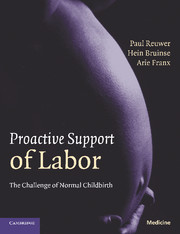Book contents
- Frontmatter
- Contents
- Foreword
- Acknowledgments
- Web-Forum
- 1 General introduction
- Section 1 A wake-up call
- Section 2 Back to basics
- 7 Lessons from nature
- 8 Elementary biophysics of birth
- 9 First-stage labor revisited
- 10 Second-stage labor redefined
- 11 Definitions and verbal precision
- Section 3 Proactive support of labor
- Index
- References
7 - Lessons from nature
Published online by Cambridge University Press: 08 September 2009
- Frontmatter
- Contents
- Foreword
- Acknowledgments
- Web-Forum
- 1 General introduction
- Section 1 A wake-up call
- Section 2 Back to basics
- 7 Lessons from nature
- 8 Elementary biophysics of birth
- 9 First-stage labor revisited
- 10 Second-stage labor redefined
- 11 Definitions and verbal precision
- Section 3 Proactive support of labor
- Index
- References
Summary
“Our cultures, ways of life, judicial systems, and religions are parts of the ecological niche in which we human beings live.” There is no doubt that each person is conditioned by his or her cultural and social background. In biological terms, however, every human being is a product of millions of years of evolution. Accordingly, the basic biological processes of parturition are essentially the same in different mammalian species.
Comparative biology
Comparative studies have shown that most mammals, including Homo sapiens, exhibit increased activity prior to the onset of labor; they are busy gathering nesting materials. Apparently, the hormonal changes in late pregnancy that prepare the uterus for the forthcoming labor (Chapter 8) also set the behavioral nesting impulse in motion. The biological purpose speaks for itself in that safety and protection during birth are essential requirements for the preservation of the species. By the same basic principle, it follows that the preparation of the female body for birth is normally not unduly taxing. Despite prelabor bodily changes and latent uterine contractility, the expectant mother takes and gets sufficient rest to be fit enough to begin the real exertion of birthing.
Duration of natural birth
Parturition is a tremendous physical challenge for all mammalian species. That is why the process of natural birth is short. Most observers of domesticated mammals estimate a duration of total parturition of a couple of hours and at the most half a day, even for the first offspring.
- Type
- Chapter
- Information
- Proactive Support of LaborThe Challenge of Normal Childbirth, pp. 55 - 58Publisher: Cambridge University PressPrint publication year: 2009



